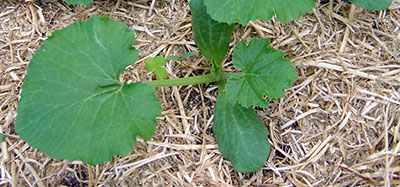Mulching Your Vegetable Garden

A layer of mulch around edible plantings keeps weeds down and provides many other benefits to the garden:
- Moderates soil temperature. Mulch keeps soils and plant roots warmer in winter and cooler in summer.
- Helps maintain soil moisture. Mulch slows evaporation and reduces the water needs of plants.
- Adds beauty. Mulch gives planting beds a neat and uniform appearance, and its color and texture can complement plantings.
- Can protect plants. Mulch can help prevent certain plant diseases, and when placed around shrubs and trees (at least 12 inches from the trunk), it reduces the likelihood of damage from trimmers and mowers.
Guidelines for Using Mulch
- Choose organic mulch for the most benefits. As they decompose, organic materials like wood chips, pine needles, leaves, and grass clippings make soil more fertile and improve soil aeration, structure, and drainage.
- Maintain a 2- to 3-inch layer. Coarse materials, such as pine nuggets, may be applied to a depth of 4 inches, but don’t allow mulch to accumulate to a greater depth. Adding more mulch can harm plants because mulch intercepts rain and irrigation meant for plants’ root systems.
- Rake old mulch. Some mulches can become matted, preventing water and air from seeping through. Rake it to benefit plantings and refresh the mulch’s appearance.
For much more information, read our article on choosing and installing mulches.
